Opening a cigarette shop sounds exciting, but it requires careful planning. One of the first questions I asked myself was, how much money is needed to open cigarette shop? The answer isn’t simple. It depends on many factors like location, size, and product range. I needed to prepare a budget that covered rent, licenses, display fixtures, staff, and initial inventory. Every decision impacted my startup costs. In this article, we will learn how much money is actually needed to open cigarette shop, from rent to fixtures and licenses, with real-world cost breakdowns.Whether you’re in the USA, Sweden, or Australia.
Table of Contents
ToggleInitial Licensing and Legal Requirements


Understanding Business Registration Costs
Before opening a cigarette shop, one of the first things to tackle is business registration. Without this step, you cannot legally operate in most countries. Business registration proves your company exists. It also allows you to apply for the proper licenses later. This stage involves multiple fees and documents depending on your region.
For example, in the USA, registering a small business typically costs between $50 and $500. That price varies depending on the state. In Sweden, registration fees through the Bolagsverket (Swedish Companies Registration Office) range from SEK 900 to SEK 2,200. In Australia, business name registration is handled by ASIC. Their fees range from AUD 39 to AUD 92 depending on the registration period. While these numbers might seem small, they are essential first steps that must be handled carefully.
Transitioning from simply choosing a business name to becoming a legal entity also requires consideration of the structure. Whether it’s a sole proprietorship, partnership, or limited company will influence future taxes and compliance. Each structure has its own rules, and the wrong decision may cost more in the long run. For example, a limited liability company (LLC) might protect personal assets but comes with additional paperwork and yearly fees.
In some cases, you might need professional help to choose the right structure. Hiring a consultant or legal expert can cost anywhere between $200 and $1000 depending on the country and the complexity of your shop setup. While some shop owners try to handle registration on their own, many prefer to pay for peace of mind. A small mistake in business classification could lead to future delays or legal issues.
When asking how much money is actually needed to open a cigarette shop, remember that registration is not just about paperwork. It’s a crucial foundation that enables everything else.
Tobacco Licensing and Product-Specific Permits
Once the business is registered, the next big hurdle is acquiring the proper tobacco licenses. Cigarette shops must comply with strict regulations. These vary by country, state, and even city. Without the correct permits, selling tobacco products becomes illegal.
In the USA, every state has its own requirements. Some states only require one license, while others ask for multiple. A local license, a state license, and a federal tobacco permit may all be needed. On average, a state tobacco license costs between $100 and $1000. Federal permits in the USA are issued by the Alcohol and Tobacco Tax and Trade Bureau (TTB) and are usually free. However, the application process takes time and effort.
In Sweden, the Public Health Agency requires sellers to register if they intend to sell tobacco products. There’s also a supervisory fee, which is based on the volume and scale of business. First-time sellers can expect to pay anywhere from SEK 1,000 to SEK 5,000 for initial approval, depending on the municipality.
Australia requires a state-specific tobacco license, too. In New South Wales, for example, the license costs around AUD 300 annually. Each Australian state or territory handles the licensing independently. So, if a store expands into another region, new licenses must be obtained.
It’s important to note that these licenses usually come with terms and conditions. Compliance checks can happen at any time. Authorities may visit your shop to verify that you’re following all tobacco laws. Not displaying proper signage, selling to minors, or failing to label products correctly can result in penalties.
Because of the strict nature of tobacco sales, you must read all rules carefully. Hiring a local compliance expert may be helpful. These services cost anywhere from $250 to $600 depending on the region. It’s an added cost, but it can prevent expensive fines or license cancellations later.
When evaluating how much money is actually needed to open a cigarette shop, never overlook tobacco licensing. It’s a non-negotiable cost that sets the foundation for product legality.
Legal Consultation and Regulatory Guidance
Navigating regulations alone can be confusing. Many countries have evolving rules around tobacco. Laws change frequently. Some cities or provinces may ban flavored cigarettes. Others may enforce plain packaging. In this legal environment, seeking expert guidance makes good business sense.
Hiring a lawyer who specializes in retail or tobacco law is common. These professionals understand the exact licenses needed in your location. They can guide you through inspections, packaging laws, and health compliance standards. Most legal consultations start at $200 per session. For a complete setup package, the cost may range from $800 to $2,000 depending on location and experience level.
A legal consultant will often help prepare documentation, file your license applications, and even respond to government inquiries on your behalf. This saves you time and reduces the chance of errors. Some consultants offer flat-rate packages for cigarette shop setups. These include license applications, training programs, and signage design advice. Though this adds to your startup cost, it reduces operational risks.
For example, in the USA, health warning label requirements are regulated by the FDA. In Sweden, you must comply with EU tobacco directives. Australia enforces some of the strictest tobacco laws in the world. Failing to meet even one guideline can result in product seizure or forced closure.
Working with legal experts also helps when selecting suppliers. Some tobacco distributors require proof of licensing and regulatory compliance. Without it, they refuse to sell to you. Having a legal partner ensures you’re always ready for audits or surprise visits.
Including legal guidance in your budget is smart. It may not be the largest cost, but it’s essential. When considering how much money is actually needed to open a cigarette shop, legal advice is a line item that adds long-term value.
Compliance Materials and Signage Regulations
After obtaining licenses and legal support, your next step is setting up compliance materials. These include signage, policy displays, and customer notices. Compliance materials are not optional. They’re mandatory in most countries.
In the USA, stores must post signs warning against selling tobacco to minors. Signs must be clear and visible. Failure to do so can result in fines. Printing professional signs costs around $50 to $200 depending on size and design. Some states offer free templates, but most shop owners prefer custom signs to match their brand.
In Sweden, there are strict requirements for signage related to tobacco control. Shops must display legal age limits, health warnings, and price lists. All of this must be in Swedish and follow formatting rules. Signage production and mounting usually cost around SEK 1,000 to SEK 2,500 depending on shop size.
Australia enforces plain packaging and standard signage laws. Every cigarette pack must follow guidelines about font, color, and image size. Shops must also warn customers of health risks. Compliance posters and banners cost about AUD 100 to AUD 400 for a standard setup.
Besides physical signs, you may need digital compliance systems. For example, an electronic age verification system helps prevent underage sales. These tools start at around $300 and can be linked to your POS system. They reduce the chance of employee error and support audit compliance.
Many owners underestimate how much signage and materials can cost. These elements are reviewed during inspections. If anything is missing, outdated, or incorrect, you could face penalties. For that reason, I always recommend printing extra signs and updating them yearly.
In short, compliance materials are a legal necessity. They reinforce your store’s credibility and protect you from fines. As you plan out how much money is actually needed to open a cigarette shop, don’t forget to include this often-overlooked category.
Transition Statement
Now that the key components of licensing, registration, and compliance have been covered, you can see how these legal foundations directly impact the total investment. They aren’t just one-time fees. These areas require updates, renewals, and checks. They are the framework for operating legally and confidently in a highly regulated industry.
In the following sections of this article, we’ll shift the focus to other essential costs. From display fixtures and staffing to inventory and marketing, each category contributes to answering the question: how much money is actually needed to open a cigarette shop?
Renting a Location for Your Cigarette Shop

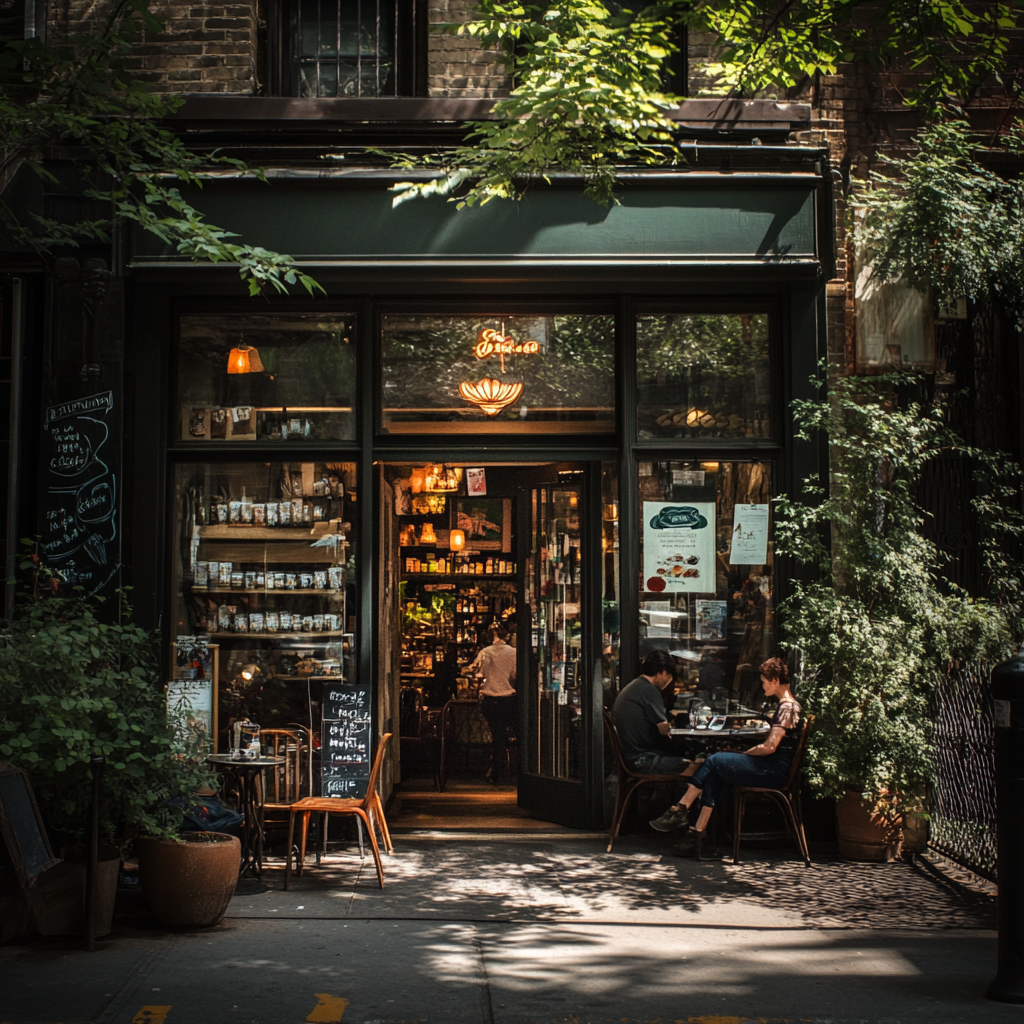
The cost of renting a shop is often the most significant startup expense. Whether in the USA, Sweden, or Australia, rent is unavoidable. When I first asked myself, how much money is actually needed to open a cigarette shop, I quickly realized rent would shape my entire budget. A cheap store in a bad location won’t attract customers. A premium store in a good spot might cost more but bring faster returns. This section explores everything from comparing rent prices to setup costs and hidden fees.
Comparing Rental Costs by Country and City
The first step was checking rental rates across different regions. Rent depends heavily on the city and the store’s visibility. In the USA, a cigarette shop in a small town might only cost $1,200 per month. However, in major urban areas like Los Angeles or Chicago, the monthly rent can easily jump to $4,000–$6,000. These figures are for mid-sized shops around 600–1000 square feet.
In Sweden, the situation was similar. In Stockholm, commercial rental rates are much higher than in towns like Malmö or Uppsala. I found that a shop in Stockholm city center could cost SEK 25,000 to SEK 45,000 monthly. Meanwhile, suburban areas offered rents of around SEK 12,000 to SEK 18,000. The square meter price often ranged from SEK 300 to SEK 700 depending on the location and building type.
In Australia, I looked at cities like Sydney, Melbourne, and Brisbane. Sydney’s central business district (CBD) has some of the highest rents, often AUD 4,000 or more monthly. Suburban locations, like Blacktown or Parramatta, had rents between AUD 1,500 and AUD 2,500 per month. A beachside or tourist-heavy area could command even more, especially for shops with display windows facing high foot traffic.
So when estimating how much money is actually needed to open a cigarette shop, I had to factor in the rent not just for one month—but for several months in advance. In some cases, landlords demanded 3 to 6 months’ rent upfront.
The location also affects visibility. A busy street brings spontaneous buyers. A quiet street may save money, but it reduces exposure. Choosing between these options is a balance between cost and potential sales volume. I had to decide how fast I wanted to grow and how much I was willing to risk.
Upfront Payments, Deposits, and Lease Terms
Rent doesn’t just start when the shop opens. It starts the moment the lease is signed. Most landlords ask for a deposit. In the USA, I found that one to three months’ rent was standard. A $3,000 monthly shop could easily require a $9,000 upfront payment. In addition to that, many landlords charge a non-refundable cleaning or maintenance fee.
In Sweden, deposits can be even higher. Some landlords asked for six months’ rent in advance. That meant an upfront cost of SEK 60,000 to SEK 90,000 just for a medium-sized store. These deposits are refundable, but only if the shop is left in perfect condition at the end of the lease.
In Australia, commercial leases often require three months’ rent plus a bond. A bond is like an insurance for the landlord. If anything breaks, they can use the bond to cover it. I also had to hire a solicitor to review my lease terms. Legal review fees ranged from AUD 400 to AUD 1,000. But skipping that step could have exposed me to hidden penalties in the lease.
Lease duration affects pricing too. A 12-month lease gives flexibility. A 36-month lease offers lower monthly rates but more commitment. I chose a 24-month lease with the option to renew. It gave me room to grow and stability in my rent planning.
Many leases include rules about signage, lighting, and noise. I needed permission to display promotional posters and LED signs. These clauses impacted how I promoted my shop and influenced customer attraction.
Deposits, bonds, and terms add hidden weight to the question, of how much money is actually needed to open a cigarette shop. The amount goes far beyond just “monthly rent.”
Shop Renovation and Setup Preparation
After securing a location, the space usually needs work. Rarely does a new tenant walk into a store that’s ready to go. Walls, flooring, lighting, and sometimes even plumbing all need attention. When I got my space, the walls were dirty, the lights were dim, and the flooring had cracks.
Painting the shop cost me $500. I chose a neutral color to keep the shop bright and clean. New flooring costs another $1,200. I used vinyl flooring, which is durable and easy to clean. If the space has old carpet or tiles, replacement becomes a must. For shop owners in Sweden or Australia, labor costs are often higher, which means a similar renovation could cost SEK 15,000 or AUD 2,000 or more.
Lighting installation was also essential. Cigarette shops need clean, bright lighting. Customers should see products clearly, especially those inside glass showcases. I spent about $800 to install overhead lights and LED strips for my display shelves. Electricians charged me another $500 to inspect the wiring and install extra outlets.
Some shops require structural repairs. Broken ceilings, water damage, or electrical issues can’t be ignored. Repairing a leaking roof cost a friend in Australia AUD 3,500. It delayed his shop opening by two weeks. If you lease an older space, prepare for unexpected renovation bills.
Decor also matters. I installed product shelves, mirror walls, and a branded counter area. The furniture cost me around $1,500. It created a better customer experience. It also helped increase sales.
All these setup expenses are part of how much money is actually needed to open a cigarette shop. They don’t just make the shop look good—they make it work.
Monthly Utility Expenses and Setup Charges
Utilities are another ongoing cost I couldn’t ignore. Every month, the shop consumes electricity, water, internet, and maybe gas. Before I even opened my doors, I had to set up service accounts with utility providers.
In the USA, my electricity hookup costs $150. Internet setup costs $100. Monthly bills for electricity ranged from $200 to $400 depending on my lighting and HVAC use. Water was cheaper, usually $40 to $80 monthly.
In Sweden, the energy provider charged SEK 1,500 to connect services. Monthly electricity costs around SEK 1,200, especially during winter. Water was billed quarterly, around SEK 700. Internet plans cost SEK 400 to SEK 600 depending on speed and provider.
Australia had similar utility rates. Setting up utilities costs about AUD 200. Monthly electric bills were AUD 250 to AUD 400. Water and gas added another AUD 80. Internet plans for businesses started at AUD 90 per month.
If your cigarette shop has a refrigerator for cigars or specialty products, utility use increases. Lighting for displays adds more energy use. Even security cameras and cash registers consume power. It all adds up.
I also paid for waste management. Trash collection costs $50 per month in the USA. In Sweden and Australia, municipal waste service is either included in rent or billed separately. Check this before signing a lease.
Utilities aren’t a one-time cost. They are monthly obligations. Even before you sell your first pack of cigarettes, the bills arrive. Include these numbers in your calculation of how much money is actually needed to open a cigarette shop. They are small individually but large over time.
Extra Costs Hidden in the Lease
Some landlords add hidden fees to the lease. These might be labeled as “common area maintenance” (CAM), “association dues,” or “building service charges.” I learned this the hard way. In one lease, I was charged $150 per month for snow removal, though it barely snowed that winter.
In Sweden, commercial buildings often include janitorial fees or maintenance reserves. I once saw a lease that charged SEK 1,000 per month for building security. Australia has something called outgoings—shared costs for building upkeep. These can include everything from landscaping to fire safety checks.
Even though they’re called “shared,” the tenant still pays. These costs ranged from 5% to 15% of the rent. On an AUD 3,000 monthly lease, I paid an extra AUD 300 for common charges. I hadn’t planned for it, but it was in the fine print.
Other leases charge for parking spaces, signage space, or even pest control. It’s important to read every line and ask about every charge. A small extra fee each month becomes a major expense over 12 months.
In some countries, landlords also charge a fee for early termination. If my business failed, I’d still owe the remainder of the lease. That made my location choice even more serious.
Adding these hidden costs gives a more accurate answer to how much money is actually needed to open a cigarette shop. The difference between advertised rent and real rent could be thousands of dollars per year.
Store Fixtures and Interior Setup Costs

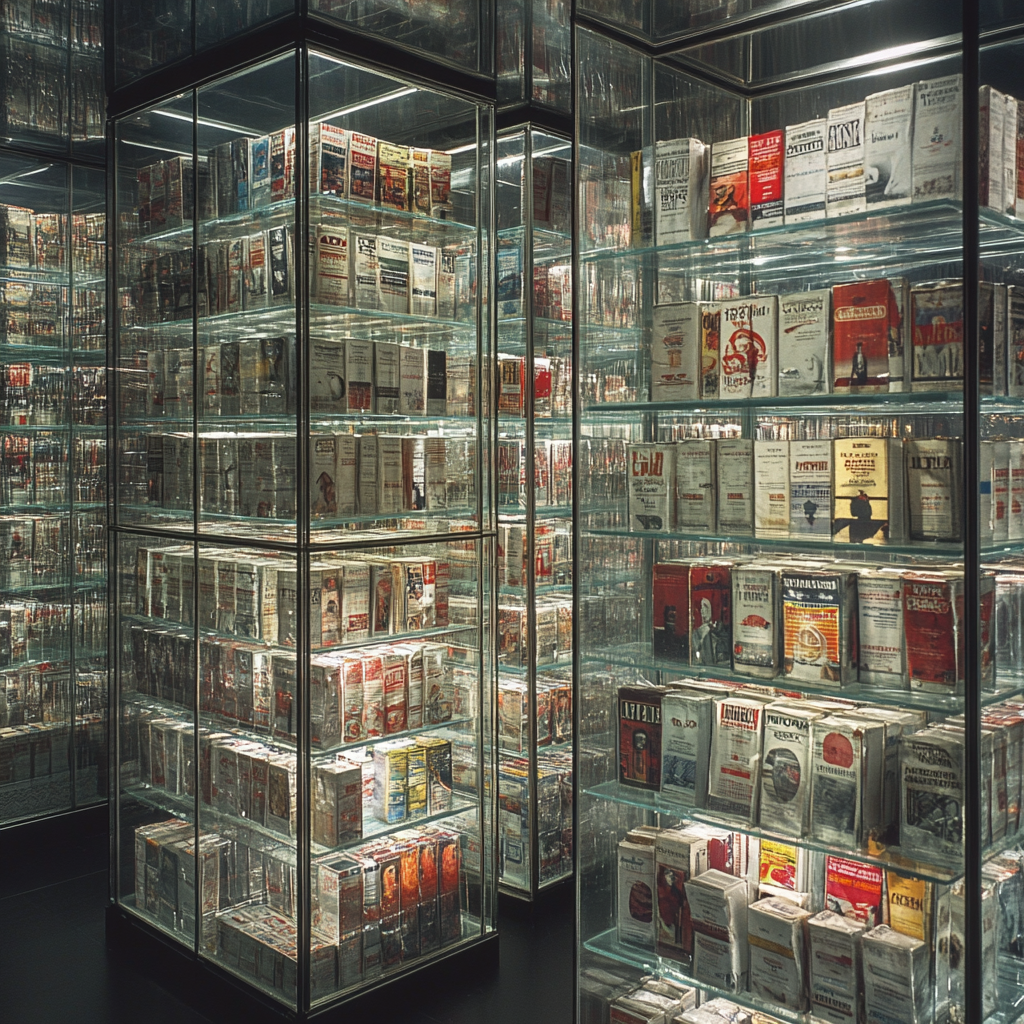
After securing a location and handling rent, I turned my focus to setting up the store’s interior. A cigarette shop isn’t complete without the right fixtures. Every display plays a role in attracting attention and organizing products. Customers decide what to buy based on how clearly they can see the items. So, I had to invest in the right layout, shelving, and counters. When asked how much money is actually needed to open a cigarette shop, fixtures are a major part of the answer.
Choosing the Right Fixtures for a Cigarette Shop
Not all fixtures work for a cigarette shop. I needed strong, clear, and professional display units. Most of my products are small but high-value. That meant I had to show everything in a clean and organized way. I wanted my shop to feel trustworthy and welcoming. That started with the displays.
Glass showcases were my top choice. I picked models with tempered glass. These are safer and more durable. Customers can see all the products clearly. They’re also easy to clean. I found that wall-mounted showcases save space, while freestanding ones help create a flow. At Fairwill Display, we offer both at affordable prices.
I also needed slatwall merchandisers. These are great for hanging lighters, rolling papers, and smoking tools. I used hooks and shelves to arrange everything. Slatwalls are flexible and make it easy to change displays.
In total, I spent around $3,000 to $4,000 on fixtures. That included four glass showcases, two wall-mounted slatwall panels, and a full-size checkout counter. If you’re opening a larger store, the cost might go up to $6,000 or more.
I avoided cheap plastic displays. They break easily and look unprofessional. I chose units made from E1 grade boards and metal frames. These materials last longer and give the shop a clean look. Investing in quality fixtures means fewer replacements later. That saves money in the long run.
When calculating how much money is actually needed to open a cigarette shop, don’t go cheap on fixtures. Your displays influence every sale.
Lighting and Visual Presentation Setup
Once I had my showcases, I focused on lighting. Lighting changes everything. It makes products stand out. It draws attention to your most valuable items. Shadows and dark corners were avoided to ensure every cigarette pack was clearly visible to customers.
I used LED strip lighting inside the glass showcases. These lights are bright, energy-efficient, and easy to install. Each showcase needed two strips—one at the top and one at the base. That gave full lighting coverage without glare.
Overhead lights were also important. I installed adjustable ceiling lights above the main display areas. These lights cost about $500 in total. I chose warm white bulbs because they made the shop feel cozy. Harsh lighting can make a shop feel cold and sterile.
I also added accent lights. These highlighted my premium product section. Customers noticed it right away. Accent lighting increases perceived product value. That helped me sell higher-margin items faster.
The total lighting setup, including wiring and fixtures, cost around $1,000. It made a huge difference. Before lighting, my store looked dull. After installation, it felt like a professional retail space.
Lighting adds to the real cost of opening. It’s not just about looks—it’s about customer behavior. When estimating how much money is actually needed to open a cigarette shop, lighting setup must be in the budget.
Checkout Area and Counter Installation
Next came the checkout zone. This is where every sale happens. It had to be safe, functional, and easy to manage. I chose a ledge-top counter. It offers privacy for cash handling. It also separates the staff from the customer side.
The counter was custom-built from E1 grade board. It included a lockable cash drawer and a display shelf for impulse items. I also added a glass top to protect the counter surface. I wanted a clean and strong design. A good checkout counter makes customers feel secure.
Behind the counter, I placed vertical display shelves. These held cigarette cartons, rolling papers, and vape liquids. I kept the most popular items close to the cashier. That made it easy to grab products quickly during checkout.
The counter unit cost about $800. The custom shelf behind it added another $300. I also bought a barcode scanner, card reader, and receipt printer. These devices added $600 to the total.
The full checkout area setup costs around $1,700. This was a key investment. It created a smooth customer experience. It also helped prevent theft and confusion.
Every store needs a checkout zone that fits the brand. I avoided using a table or a basic desk. It would have made the store feel cheap. When answering how much money is actually needed to open a cigarette shop, always include a solid checkout area in the plan.
Security and Maintenance Add-Ons
Once the store looked great, I had to protect it. Customers in the USA preferred Marlboro, Newport, Camel, and American Spirit. The focus in Sweden was on General, Prince, and LD. Winfield and Peter Jackson were added to the assortment for Australia.
The cameras connected to a small monitor in the staff room. They also stored video on a hard drive for 30 days. This setup costs around $500. I hired a technician to install and test the system. His service fee was $200.
I also installed glass locks on all showcases. These locks were small but strong. Each one cost $25. I used eight locks in total. That added $200 to my setup costs.
I bought a fire extinguisher and mounted it near the counter. Local law required it. I also bought smoke detectors for safety. The total for fire safety gear was around $150.
Cleaning tools and materials were also added to the list. I purchased a vacuum, mop, and cleaning sprays. A clean store looks better and feels safer. These cost about $100.
When I thought about how much money is actually needed to open a cigarette shop, I didn’t just focus on customer-facing items. Security and cleanliness matter just as much.
Inventory Budget for Cigarettes and Accessories
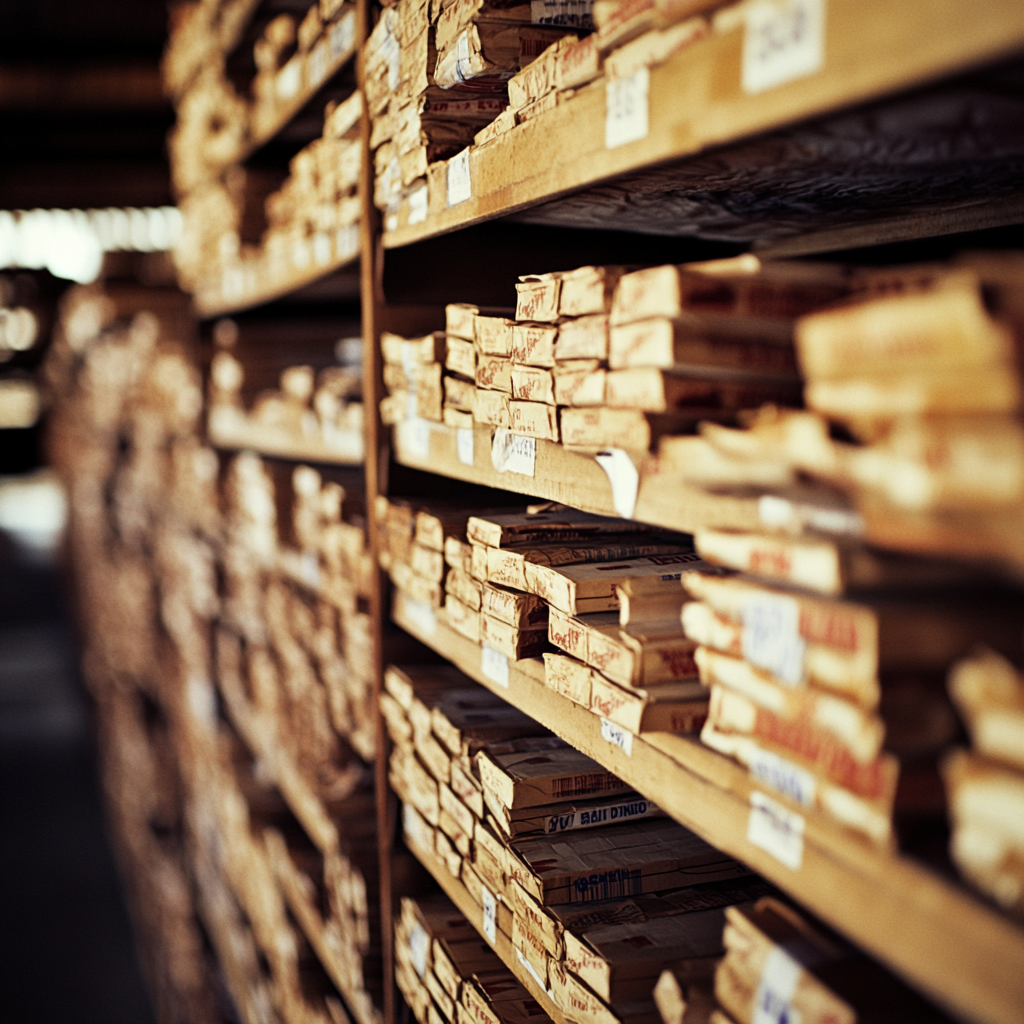
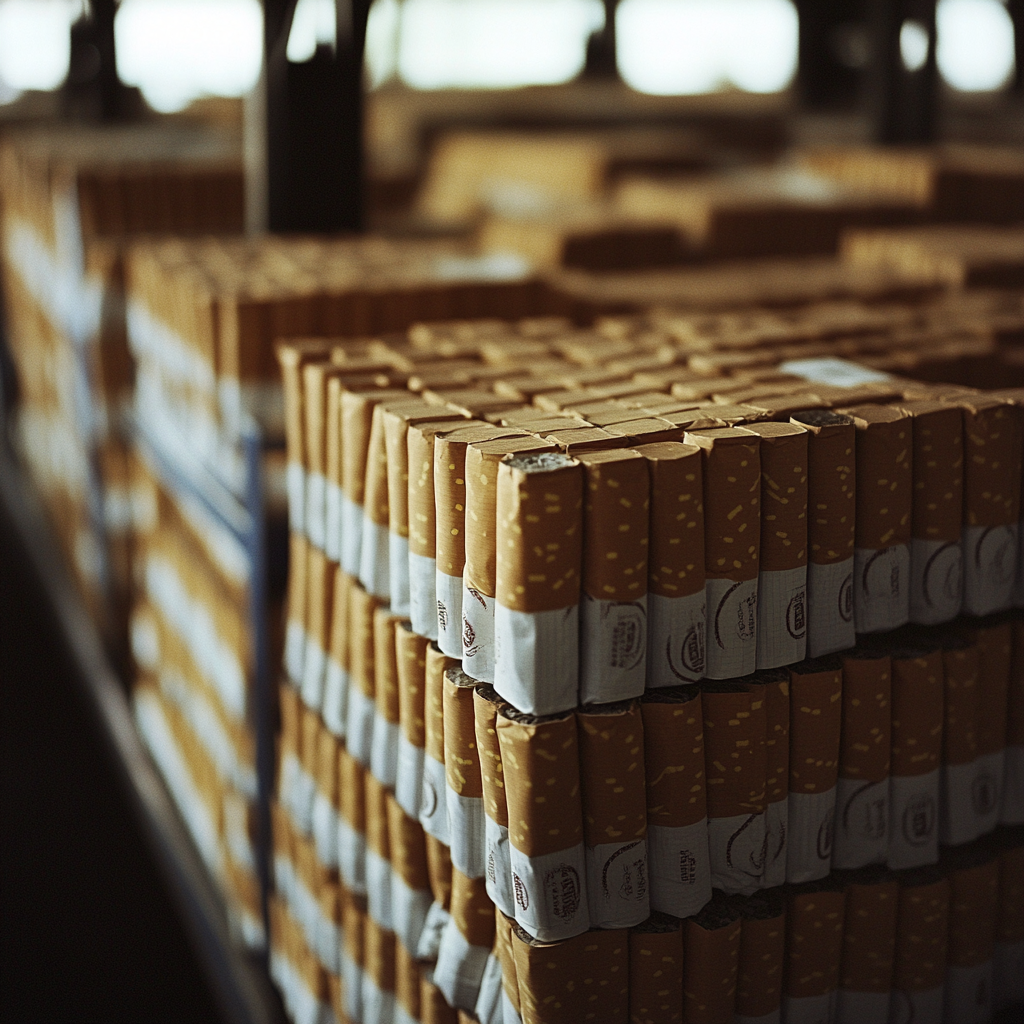
Once the store was fully set up, it was time to stock products. This was one of the biggest expenses. The entire shop exists to display and sell inventory. Without stock, there’s no business. So when I continued to ask myself, how much money is actually needed to open a cigarette shop, inventory played a massive role in the total.
Estimating the Initial Stock Requirements
I started by calculating how many products I needed for the grand opening. I couldn’t afford to overstock and waste money. But I also didn’t want half-empty shelves. My plan was to look well-stocked but stay within budget.
First, I divided the inventory into categories: cigarettes, cigars, rolling tobacco, lighters, ashtrays, papers, and vape accessories. Cigarettes were my main focus. I ordered 25 cartons each of five popular brands. Each carton held 10 packs. That gave me 1,250 packs to start.
Prices per carton varied. Basic brands like Marlboro or Camel cost me around $50 to $70 per carton wholesale in the USA. Premium or imported brands went up from $90 to $120. On average, I spent $60 per carton. So for 125 cartons, the cost was $7,500.
In Sweden, I found wholesale cigarette costs were higher. Taxes and regulations pushed prices up. I adjusted the quantity and bought fewer premium options. In Australia, the tobacco tax is even higher. That meant smaller initial stock with a focus on fast-moving items.
Rolling papers, lighters, and ashtrays added another $1,000 to the first order. These items were low-cost but high-margin. Customers often bought them together with cigarettes.
When estimating how much money is actually needed to open a cigarette shop, I had to plan every dollar of my starting inventory. I balanced product variety with cash flow.
Selecting Brands Based on Customer Demand
Choosing the right brands was critical. I didn’t want a stock that sat on the shelves for months. So I researched popular brands in my region. I also visited local competitors to see what they sold the most.
Customers in the USA preferred Marlboro, Newport, Camel, and American Spirit. For Sweden, the focus was on the General, Prince, and LD. In Australia, Winfield and Peter Jackson were added to the assortment. Every country has unique preferences. I used that data to shape my first order.
Some brands required special approval or bulk purchase terms. I had to open supplier accounts, which sometimes took several days. Others needed me to show proof of my tobacco license before shipping any products.
For boutique products like hand-rolled cigars or flavored cigarettes, I started small. I ordered 10 boxes of each type. That way I could test what customers liked. If one product didn’t sell, I didn’t lose too much money.
Customers also wanted choices in nicotine strength and flavor. So I made sure each brand had multiple options—lights, menthols, and full-strength. This created variety without overstocking.
Inventory decisions affect daily operations. If customers don’t find what they want, they won’t return. But if shelves are full of slow-selling stock, cash gets trapped. That’s why choosing the right brands helped me control how much money I needed to make.
Tobacco Accessories and Cross-Selling Items
Cigarette shops sell more than just cigarettes. Accessories increase profit margins. They also create upselling opportunities. I stocked items that customers usually grab without thinking.
Rolling papers were cheap but essential. I bought 500 packs of different types—regular, king-size, and flavored. Each pack costs around $0.50 wholesale. I priced them at $1.50 to $2.00 in-store. That gave me strong profit margins.
Lighters were next. I ordered 300 refillable lighters and 200 disposable ones. Refillable models cost me $1.00 each. I sold them for $2.50. The disposables were even cheaper. Selling accessories helped cover daily expenses.
I also added ashtrays, rolling trays, and tobacco grinders. These weren’t high-volume items, but they gave the shop a complete look. Customers liked that they could buy everything in one place.
Even small accessories can impact the total startup cost. I spent $2,000 stocking these items. That might seem small compared to tobacco, but the return on investment was strong. One lighter often leads to more sales later.
Including accessories is part of how much money is actually needed to open a cigarette shop. It makes the store more than just a place to buy cigarettes. It becomes a full smoking experience.
Managing Inventory Storage and Reorders
After I placed my first order, I had to plan storage. Tobacco products can’t sit in direct sunlight. They need a cool, dry place. I installed lockable cabinets behind the counter. I also added under-counter storage for restocks.
Some items, like rolling papers, can last months. Cigarettes have a shelf life too, usually one year. I tracked expiration dates using a digital inventory system. It cost $300, but it saved me from stocking expired goods.
I also tracked daily sales. When I noticed a product moving fast, I reordered before running out. Most suppliers deliver in 3 to 5 business days. But I kept at least two weeks’ worth of bestsellers on hand at all times.
I scheduled reorders every 10 days. That helped me balance stock levels. I didn’t tie up too much cash in inventory. I also avoided disappointing repeat customers.
Setting reorder points helped reduce waste. It also showed me which items were seasonal. For example, menthol sales dropped in winter. I adjusted my orders accordingly.
Storage and inventory control are often overlooked. But they’re crucial. If your shelves are always half-empty, customers lose confidence. If you overstock, you lose money. That balance helped me better answer the full question of how much money is actually needed to open a cigarette shop.
Staffing and Training Your Shop Team


Hiring the right team is just as important as choosing the right products. A friendly and knowledgeable staff helps build trust. In a cigarette shop, staff must also follow strict rules, like checking ID and handling age-restricted sales. These responsibilities add pressure. That’s why I invested time and money in hiring and training. Labor costs became a big part of the answer to how much money is actually needed to open a cigarette shop.
Deciding How Many Employees You Need
Before hiring, I had to decide how many people I needed. My store was small, around 600 square feet.The plan was to operate from 10 a.m. to 9 p.m., seven days a week. Since managing everything alone wasn’t feasible, a basic schedule was created.
I needed two full-time staff and one part-time employee. Each shift required one person at the counter. On weekends and holidays, I needed two people. That covered lunch breaks, deliveries, and customer flow.
In the USA, a full-time employee earns around $2,000 to $2,500 per month. Part-time workers earn $1,000 to $1,200. In Sweden, monthly wages are higher—around SEK 25,000 for full-time. In Australia, expect to pay AUD 3,000 to AUD 3,500 monthly for full-time staff.
So my monthly payroll was $5,000 in the USA. In Sweden or Australia, it would be even higher. Multiply that by the first three months, and you’ll see how staff costs quickly add up. Hiring people is not cheap—but it’s necessary for growth.
When asking how much money is actually needed to open a cigarette shop, payroll is one of the biggest long-term costs.
Hiring Costs and Legal Requirements
Hiring isn’t just about offering a salary. I also had to handle legal paperwork. In the USA, I needed to register for an Employer Identification Number (EIN). In Sweden, I had to register with Skatteverket and follow employment laws. Australia required me to set up payroll tax accounts and register with Fair Work.
I also had to budget for job ads. I posted on local job boards and Facebook. Advertising each position costs around $50 to $100. I also printed flyers and handed them out nearby. Some shop owners use hiring agencies. They charge more but save time. I did the hiring myself to cut costs.
Once I found candidates, I ran background checks. I needed staff I could trust. The checks cost about $30 per person. I also verified age, since employees must be 18 or older in most regions to sell tobacco.
Uniforms added more cost. I bought two shirts per employee with my shop logo. Each shirt cost $20. Three staff needed six shirts total—$120 spent on uniforms.
Hiring legally and properly costs money. Skipping steps might seem faster, but it’s risky. If I hired someone without the right paperwork, I could face fines. These legal requirements belong in any serious discussion about how much money is actually needed to open a cigarette shop.
Training Employees on Tobacco Compliance
Training is not optional in this business. Staff must follow tobacco laws. They must check ID, refuse sales to minors, and handle complaints calmly. One mistake could cost the entire business.
The first week was dedicated to training the team, covering product types, brands, and pricing. A checklist of daily tasks was also created to ensure thoroughness. That helped new staff stay organized.
In the USA, I also enrolled them in a tobacco retail training course. Some states offer this online. It costs around $20 per person. It teaches age verification and compliance rules. In Sweden, tobacco training is often provided by municipalities. In Australia, I used online courses through government portals.
I printed laminated ID-check guides and taped them near the register. I also set up the POS system to remind staff to ask for ID. These little tools made a big difference. Mistakes dropped. Confidence rose.
The training helped my employees feel more prepared. It also made customers feel safe and respected. If I hadn’t invested in staff training, I would’ve faced more issues later. It’s one of the smartest costs in how much money is actually needed to open a cigarette shop.
Planning for Ongoing Payroll and Emergencies
After the first month, payroll becomes a monthly commitment. Every 30 days, I had to pay wages, taxes, and social contributions. I also set aside extra cash for emergencies. If someone quit suddenly, I needed funds to hire quickly.
In the USA, I paid 7.65% in employer payroll taxes. That added around $382 monthly to my labor costs. Sweden has higher employer contributions—up to 31.42%. In Australia, superannuation (retirement contributions) added 11% on top of each salary.
I also saved for sick leave and holiday pay. If an employee called in sick, I still had to pay them. That meant hiring a temporary replacement or covering the shift myself.
I used accounting software to manage payroll. It costs $20 per month but saves time. It also helped me avoid late payments and tax mistakes.
For some months, business was slow. I still had to pay staff. That’s why I always kept a 2-month payroll reserve. It gave me peace of mind.
Payroll doesn’t stop when the shop opens. It continues every month. It grows with your team. And it always affects how much money you need to stay open. So if you’re serious about understanding how much money is actually needed to open a cigarette shop, plan for labor—today and tomorrow.
Marketing and Advertising Your Shop
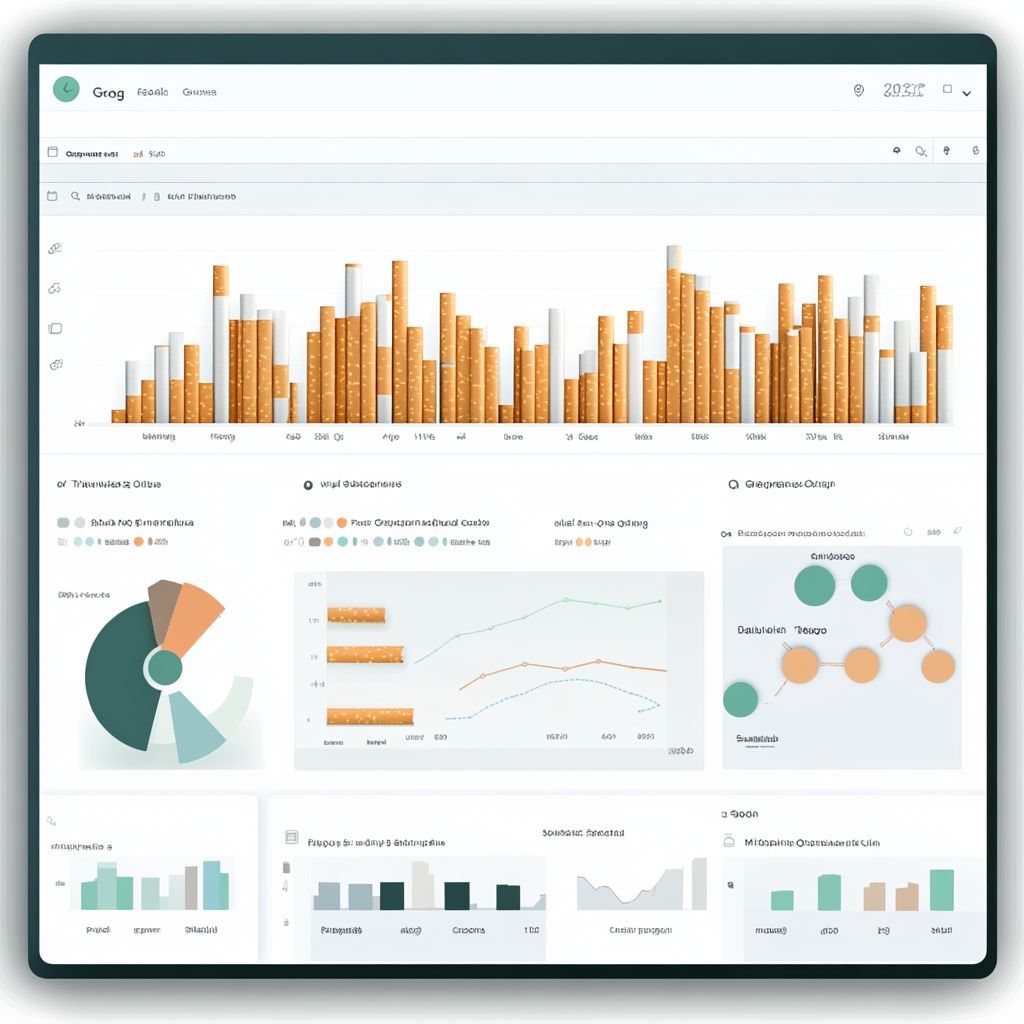
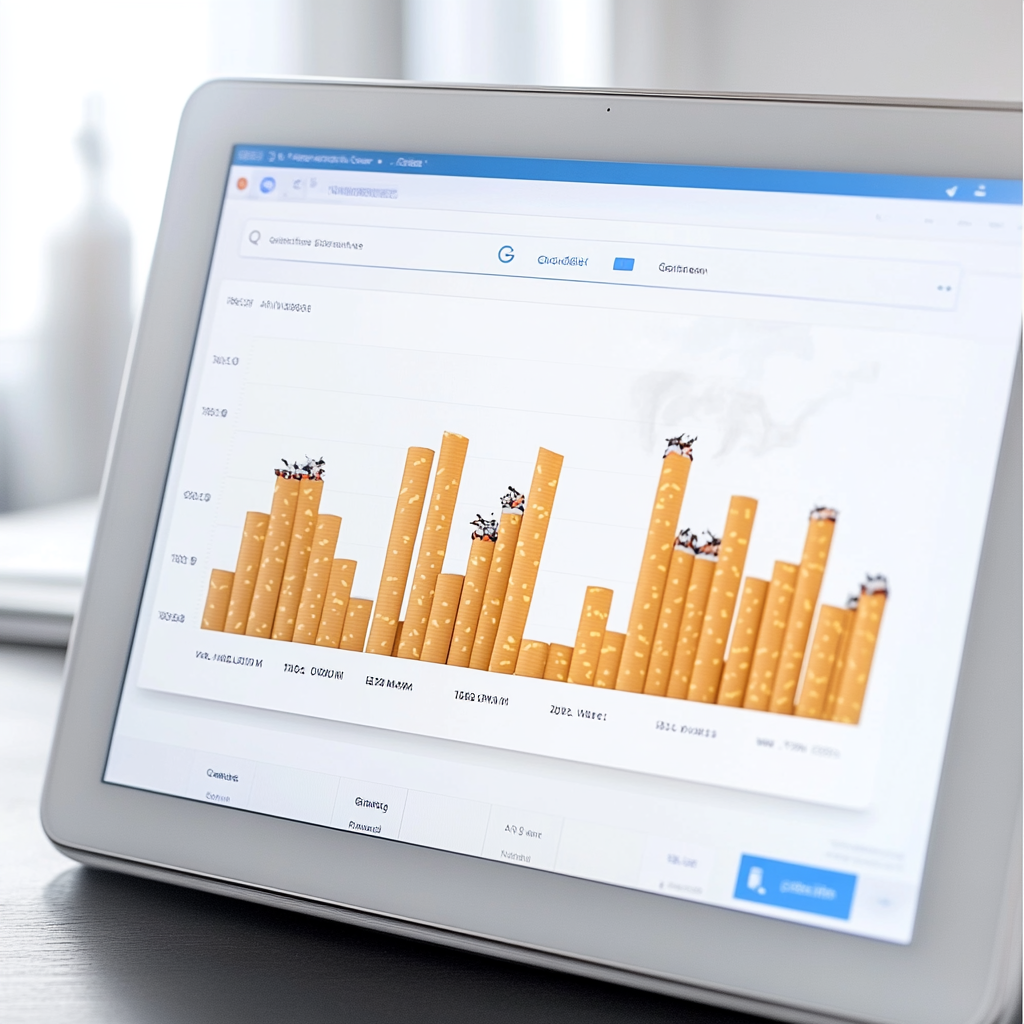
After I opened my shop and stocked it, one big challenge remained—getting customers in the door. No matter how good the setup is, no sales happen without foot traffic. That’s why I had to focus on advertising. Every store needs a strong local presence. Whether you’re in the USA, Sweden, or Australia, marketing plays a major role when calculating how much money is actually needed to open a cigarette shop.
Planning a Grand Opening Campaign
First impressions matter. I wanted people in the neighborhood to know my shop existed. So I planned a small grand opening event. Friends, local workers, and nearby business owners were invited to the event. Flyers were distributed two weeks prior to the launch, and the event was also promoted on social media.
I gave out free lighters to the first 50 customers. The cost? About $40. I also offered 10% off all items on day one. That helped increase foot traffic. For decorations, I used balloons, a small banner, and some music. Total decor cost was under $100.
In the USA, I printed 500 flyers. That cost me $80. In Sweden and Australia, printing prices were similar. I placed flyers on cars, notice boards, and mailboxes. I also visited local cafes and asked to leave a stack there.
The full grand opening campaign cost me about $300. That small investment brought in over 100 customers on opening day. Many returned later. That’s why event planning is part of how much money is actually needed to open a cigarette shop—it sets the tone for your first impressions.
Using Google Ads and Local SEO
Online marketing is powerful. I wanted people searching for cigarettes or tobacco in my area to find me fast. That’s why I used Google Ads. I created ads targeting people within 10 miles of my shop. I chose keywords like “cigarette shop near me,” “cheap smokes,” and “hookah accessories.”
My daily budget was $10. In a month, I spent $300. The ads brought new visitors. Many found me for the first time through a Google search.
I also claimed my Google Business Profile. I added photos, opening hours, and a shop description. This helped people see my store on Google Maps. I asked every customer to leave a review. More reviews improved my search rank. I didn’t spend money here—just time.
In Sweden and Australia, Google Ads worked the same way. I adjusted the keywords to match the local language and habits. For example, I used “tobaksbutik” in Swedish campaigns.
Google Ads are highly effective. Even with a small budget, they bring steady traffic. And when you’re estimating how much money is actually needed to open a cigarette shop, paid search must be part of the plan.
Promoting on Social Media Platforms
Social media is free—but powerful. Accounts were set up on Instagram and Facebook, featuring posts with pictures of the displays, new arrivals, and promotions. Additionally, stories were utilized to showcase daily life inside the shop.
I boosted my best posts with small ad spending. $5 here, $10 there. In one month, I spent about $100. Each post reached hundreds of people nearby.
On Facebook, I joined local groups. Updates on store hours, new products, and special deals were posted without spamming, providing only useful information to the audience. People responded well.
In Sweden, I used Instagram to post stylish pictures. Cigarette brands are heavily restricted in ads. But I focused on accessories and store ambiance. That kept things legal and appealing.
In Australia, local Facebook groups were very active. I built a following by responding quickly and being friendly. Social media helped humanize my brand. It cost almost nothing, but it built loyalty.
If you’re starting with a small budget, use free tools first. They stretch your reach without draining your wallet. These channels answer part of the question, of how much money is actually needed to open a cigarette shop because they balance cost with long-term value.
Printing and Distributing Traditional Marketing Materials
Even in a digital world, printed materials still work. Many of my best customers found me through a flyer or poster. I created simple brochures listing my top products and prices. I left these in barbershops, bars, and laundromats.
Posters worked well too. I made a large signboard for outside my shop. It listed special offers and opening hours. That sign cost $70 to print. But it brought in new customers every day.
Understanding the impact of the right layout and display choices on product visibility and sales, personalized advice was given on selecting glass showcases that highlight best-selling items. Guidance was also provided to comprehend the difference between using slatwall merchandisers and wall-mounted shelving, taking into account traffic patterns.
In the USA, I printed everything locally. Costs were manageable—around $150 per month. In Sweden and Australia, I used online printing services. They delivered quickly, and the quality was high.
These physical materials created visibility. When combined with online ads, the results were strong. If you rely only on digital or only on print, you’ll miss customers. The full marketing picture matters when asking how much money is actually needed to open a cigarette shop.
Daily Operational and Maintenance Costs


Opening day is only the beginning. Running a cigarette shop means facing daily costs that never go away. These include everything from utility bills to cleaning supplies. I also had to think about packaging, software, and regular inspections. When calculating how much money is actually needed to open a cigarette shop, these ongoing operational and maintenance costs are a huge part of the puzzle.
Utility Bills and Monthly Overheads
Every month, I had to pay for power, water, internet, and heating or cooling. In the USA, my electricity bill averaged around $300 monthly. If I used more lights or added fridges for cigars, the bill would go up to $500. Water and sewer services were lower—about $40 monthly. The Internet cost me $60.
In Sweden, energy bills were higher during the winter. Heating the store added SEK 1,000 to SEK 1,500 each month. Water came every quarter, but I averaged SEK 400 monthly. Fiber internet costs about SEK 500. Australia had similar costs, especially for power. I paid AUD 250 to AUD 400 every month for energy and AUD 100 for internet.
Altogether, I spent around $500 to $700 per month just to keep the store running. These numbers stayed constant even if sales were slow. That’s why overhead costs are a critical part of the question: how much money is actually needed to open a cigarette shop?
I also had to budget for air conditioning in summer and heating in winter. Customers don’t like shopping in a stuffy or cold store. A comfortable environment made them stay longer and buy more.
Cleaning, Restocking, and Sanitation Supplies
Keeping the shop clean was essential. Customers notice dust, fingerprints, and trash. A dirty shop looks untrustworthy. I created a weekly cleaning schedule. Each day, I wiped down the glass showcases, swept the floor, and emptied the bins.
I used microfiber cloths, disinfectant spray, glass cleaner, and air fresheners. I also bought gloves, trash bags, and floor cleaners. These items seemed small, but they added up. I spent $50 to $100 each month on cleaning products.
In Sweden, cleaning supplies cost SEK 500 to SEK 800 monthly. Australia was similar—AUD 80 to AUD 120. I also hired a cleaner once per week. She charged me $40 per visit. That was $160 extra monthly. But it saved time and kept the shop spotless.
I stocked items like tissues, hand sanitizer, and wipes for customer use. People appreciated the hygiene. During flu season, this made a big difference.
When planning how much money is actually needed to open a cigarette shop, cleanliness costs must be included. A clean store keeps customers coming back.
POS Systems, Software, and Maintenance
My shop needed a point-of-sale (POS) system to process payments. I used a tablet-based system connected to a barcode scanner, receipt printer, and cash drawer. The full setup cost me $700. But that was just the beginning.
Each month, I paid $50 for the POS software subscription. This gave me access to inventory tracking, sales reports, and employee logins. In Sweden and Australia, the same systems existed, but local tax software had to be included. That raised costs to around $80 monthly.
I also had to keep the system updated. One time, my POS crashed during a busy afternoon. I called tech support. The issue was fixed, but I paid a $75 support fee. I learned the hard way that tech maintenance is part of everyday costs.
To stay compliant, I updated prices and product info weekly. I backed up all sales data to the cloud. I used Google Workspace for my documents—another $10 monthly. Add that to the POS cost, and I was spending around $60 to $100 monthly on software and maintenance.
No shop can run efficiently without a reliable POS. It speeds up transactions, tracks bestsellers, and helps with taxes. When asking how much money is actually needed to open a cigarette shop, don’t forget the hidden cost of technology.
Packaging, Bags, and Consumables
Every customer purchase needed packaging. I offered paper bags for cigarettes and small boxes for gift purchases. I also stocked branded stickers, receipt paper, and labels. These items made the store feel more professional.
I ordered 1,000 paper bags for $120. Stickers cost $50 for a batch of 500. Receipt paper rolls were $3 each. I used about 10 rolls per month. Labels for custom items added another $30 monthly.
In Sweden, the packaging had to meet eco-friendly rules. I used biodegradable bags that cost SEK 2 each. Australia had similar rules. I bought recyclable bags for AUD 0.30 each. These costs were small per item, but they added up over time.
Consumables included tissues, lighter fluid (for testing), and product samples. Some customers liked to inspect cigars or papers before buying. I offered open samples to build trust.
In total, I spent $200 monthly on packaging and consumables. These costs came with every sale. When sales increased, so did packaging use. That meant higher expenses during busy months.
If you want to know how much money is actually needed to open a cigarette shop, add consumables to your monthly plan. They support sales and customer experience.
Repairs, Replacements, and Unexpected Expenses
Shops don’t stay perfect forever. Things break. Items wear out. I had to prepare for small repairs and replacements.
One of my glass shelves cracked during restocking. Replacing it cost $80. Another time, the front sign’s light stopped working. Fixing it costs $120. These weren’t major repairs, but they hit the budget hard if I wasn’t ready.
I kept a maintenance reserve of $500. This fund helped cover emergencies. Once, my receipt printer jammed, and I had to replace it immediately. I also needed new batteries for the security cameras. Little things broke more often than expected.
In Sweden, I hired a local handyman to fix loose tiles and repaint a wall. That cost SEK 1,200. In Australia, I replaced a faulty power socket. The electrician charged AUD 180. These expenses happen without warning.
I also set aside funds for seasonal changes. During winter, I added rugs to keep the store warm. In the summer, I replaced the AC filter. These were not monthly bills, but they were still operational costs.
Every cigarette shop needs a buffer for repairs. Without it, problems pile up. If you’re serious about understanding how much money is actually needed to open a cigarette shop, plan for the unexpected.
Banking Fees, Taxes, and Monthly Deductions
Another category of hidden costs came from banking and taxes. I paid fees for card transactions—usually 2% to 3% per sale. If I made $10,000 in card sales, I lost $200 to $300 in fees.
I also had to maintain a business bank account. In the USA, this costs $10 to $20 monthly, banks charged SEK 100 to SEK 200 in Sweden and AUD 15 for account maintenance in Australia.
Tax filing requires either software or an accountant. I used accounting software for $25 monthly. I also hired a bookkeeper every quarter. Her service cost me $300. But she helped me avoid fines and stay compliant.
I paid monthly sales tax on tobacco. This amount changed based on what I sold. I kept detailed records to prepare for audits. I submitted tax forms monthly or quarterly, depending on the country.
These deductions might not seem large, but they are regular. Forgetting them causes trouble. Adding them to your monthly budget is essential when calculating how much money is actually needed to open a cigarette shop.
Staff Break Room, Supplies, and Extras
Even small stores need a space for staff breaks. I set up a small corner with a chair, mini-fridge, and coffee machine. The fridge cost $100. The coffee machine was $80. I bought mugs, plates, and a kettle for $50.
I stocked water bottles, instant noodles, and snacks. These kept the team happy during long shifts. I spent around $50 monthly on staff supplies.
In Sweden, I added fika essentials—cookies and tea. In Australia, I bought snacks and cold drinks during summer. These small comforts helped morale and reduced turnover.
I also created a suggestion box. Staff wrote down what they needed. One month, they asked for a fan. I bought it for $40. These extras didn’t break the bank, but they improved the work environment.
Even a tiny break room adds value. Supporting the team and building loyalty are crucial. Both should be factored into the real estimate of how much money is needed to open a cigarette shop.
Emergency Funds and Hidden Expenses
Running a cigarette shop taught me that no plan is ever perfect. No matter how well I prepared, unexpected costs still showed up. These surprise expenses could have shut my store down—if I hadn’t created an emergency fund. When calculating how much money is actually needed to open a cigarette shop, this category might be the most underestimated.
Preparing for Health and Safety Inspections
In every country I’ve worked in, cigarette shops face regular inspections. Health inspectors, fire marshals, and tax officials can visit without warning. I had to make sure everything was up to code. I also had to be ready for fines or changes.
One inspection found that my emergency exit sign was too dim. I had to replace it immediately. That cost $120. Another time, I didn’t have enough safety signage near the smoking accessories. I had to order new ones fast. That added $80.
In Sweden, I had to upgrade my ventilation system after an air quality check. That repair cost me SEK 3,000. In Australia, a fire inspection required me to install a second extinguisher. That cost AUD 180.
If I hadn’t saved money for these issues, they could’ve delayed operations. I kept $1,000 in a separate emergency account. I added to it monthly. When issues popped up, I was covered.
Inspections are stressful, but they’re part of the game. Being ready makes a big difference. That’s why they matter when figuring out how much money is actually needed to open a cigarette shop.
Replacing Damaged or Expired Inventory
Another hidden cost came from damaged stock. Cigarette packs are fragile. If they fall or get wet, I can’t sell them. I once lost an entire carton when a shelf collapsed. That was $60 gone in seconds.
In hot weather, I had to move some items to cooler areas. Heat damages packaging and flavor. I also watched expiration dates closely. Cigarettes and cigars have shelf lives. If I didn’t sell them in time, I had to throw them out.
I also had customers return items. Some claimed the product was stale. Others said the pack was torn. I offered refunds to keep my reputation strong. These returns cost money. But keeping customers happy was worth it.
I now budget for loss and damage. I expect 1% to 3% of inventory will go bad. For a shop with $10,000 in stock, that’s $100 to $300 each month.
Damaged goods are part of retail. If you ignore them, they hurt your profits. If you prepare, you stay safe. That’s why they count toward how much money is actually needed to open cigarette shop.
Handling Slow Months or Seasonal Slumps
Sales are never consistent. I had busy weeks and quiet months. Holidays boosted business. Summers brought fewer customers. I had to pay rent and staff regardless of sales.
In slow months, I still spent $6,000 to $8,000 on operations. If I didn’t have savings, I would have struggled. That’s why I saved money during good months. I kept at least one month’s full expenses in reserve.
Marketing helped too. I ran small promotions during quiet weeks. Buy-one-get-one-free offers or bundle discounts kept people coming in.
Sales cycles are real. You must prepare for the ups and downs. A strong plan reduces panic and keeps your store open. Planning for sales dips is part of knowing how much money is actually needed to open a cigarette shop.
Legal and Accounting Surprises
One month later, I got a letter from my tax office. I had underpaid my tobacco tax due to a filing error. I had to pay $600 within 10 days. That moment reminded me to always keep some extra money for legal or tax mistakes.
I also had to hire an accountant to correct the issue. She charged me $250. That month, I had to spend almost $1,000 on unexpected legal help. Without savings, I would have been in trouble.
In Sweden and Australia, tax systems are strict. Any mistake can lead to fees. Hiring professionals helps, but it costs money. So, I added a legal cushion to my budget.
I now save $100 monthly for legal and accounting emergencies. These funds also cover contract updates, lease renewals, and software license issues.
Legal problems don’t happen every day. But when they do, they hit hard. That’s why they must be part of how much money is actually needed to open cigarette shop.
Why Fairwill Display
When I first started looking for reliable store fixture suppliers, I didn’t want just another factory. I wanted a partner who truly understood my needs, offered real value, and helped me grow my business. That’s exactly what I found with Fairwill Display.
Expert Advice You Can Rely On
As a business owner, I’m constantly making decisions about product displays, space layout, and store image. But I’m not a display expert. I needed someone who could give me clear, actionable advice—not just sell me products.
Fairwill Display took the time to understand my store layout and product range. They didn’t just recommend random showcases. They suggested the most efficient display layout for my square footage. I received professional guidance on lighting, product positioning, and how to create a customer-friendly environment. Every suggestion was backed by experience and tailored to my niche.
If you’re like me, and you want someone to guide you—not pressure you—then you’ll appreciate the level of expertise Fairwill Display brings to the table.
Cost-Effective Quality That Doesn’t Compromise
I work with a tight budget, but I still want displays that look premium. Fairwill Display gave me both. Their prices are some of the best I’ve found in the international market, but what really impressed me was the quality.
All their glass showcases are made from E1 grade boards and tempered glass—safe, strong, and built to last. I never had to worry about scratches, warping, or cracked edges. Their team made sure everything was well-packed for overseas shipping, and I received my order in perfect condition.
If you’re looking for affordable products that actually perform, this is where Fairwill Display really shines.
Customized Solutions for Unique Store Types
One thing I loved was the flexibility. I run a boutique-style store, and I didn’t want cookie-cutter displays. Fairwill Display offered custom display solutions to match my brand’s look and feel. They adjusted sizes, finishes, and even logo placement—without making the process complicated.
Their design team sent me 3D renderings before production. I knew exactly what I was getting. That gave me confidence, and more importantly, it helped me create a store that reflects my identity.
If you need displays that fit your concept, not just your budget, they will work with you to deliver a tailored experience.
Fast Response and Professional Communication
Time is everything when you’re running a business. I never had to wait days to get a reply. Fairwill Display’s team responded to every question fast—often within hours. Whether it was about shipping, installation tips, or bulk pricing, they were always ready to help.
They speak clear, professional English, and every conversation felt smooth and productive. I didn’t have to chase them for updates or confirmations. That kind of support is rare, especially when working with overseas factories.
Global Experience, Local Understanding
Fairwill Display has experience shipping to the USA, Sweden, Australia, and many other regions. They understood my country’s import rules and helped me prepare the right documents. That saved me from customs delays and unexpected fees.
They also understood what styles and formats work in my local market. Their suggestions matched customer preferences in my area. I never felt like I was buying blindly from a foreign company—they made the entire process easy and smooth.
Ready to Get Started?
Working with Fairwill Display gave me more than just products. I got expert advice, real value, and a reliable partner who supports my business goals. Whether you’re a wholesaler, boutique owner, or store fixture supplier—if you need quality glass showcases, slatwall merchandisers, or display counters, this is the team to trust.
Send your inquiry today. Let Fairwill Display show you how easy and affordable it is to upgrade your store.
